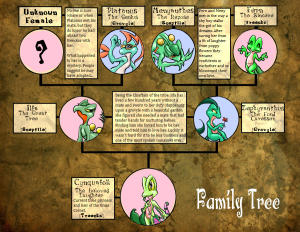Languages of love for children include verbal affirmations, quality time, acts of service, gifts, and physical touch. Children communicate and understand love in different ways.
Just like adults, they have their own language of love. Understanding and speaking your child’s love language is crucial for building a strong emotional connection and nurturing their development. We will explore the five primary languages of love for children, helping you identify and express love in a way that resonates with your child.
Whether it’s through encouraging words, spending dedicated time together, expressing love through acts of service, giving thoughtful gifts, or showing affection through physical touch, discovering your child’s love language can transform your relationship and enhance their emotional well-being. So let’s dive into the unique ways children give and receive love!
Table of Contents
ToggleUnderstanding Love Languages In Children
| Languages Of Love For Children |
| Understanding Love Languages in Children |
| Overview of Love Languages |
| Applying Love Languages to Children |
Love languages for children help show care and affection. Kids express love differently, like hugs or kind words. Understanding how children receive love can strengthen bonds. Observing kids’ responses can guide parents in showing love effectively.
Exploring The Five Love Languages
In the world of love, it’s important to understand that everyone expresses and receives love differently.
Words Of Affirmation
Some children feel most loved when they hear kind and encouraging words from their loved ones. These words can boost their confidence and make them feel appreciated and valued.
Quality Time
For other children, quality time is the key. Spending uninterrupted time with them, engaging in activities they enjoy, and giving them undivided attention can make them feel deeply loved.
Receiving Gifts
Gifts can hold special meaning for certain children. It’s not about the monetary value but the thought and effort put into choosing a meaningful present. The act of giving and receiving gifts can convey love and care.
Acts Of Service
Some children appreciate gestures of love through acts of service. Helping them with tasks, doing things that make their lives easier, and showing support and care through actions can speak volumes to them.
Physical Touch
Physical touch, such as hugs, kisses, and gentle pats on the back, can be incredibly important for certain children. It provides them with a sense of security, comfort, and affection.
Understanding these different love languages can help parents, teachers, and caregivers better connect with children and make them feel loved and cherished in their own unique way.
Practical Tips For Communicating Love Languages
Observing and Identifying Your Child’s Love Language can be done by paying attention to how they express affection and respond to love. Tailoring communication to suit your child’s needs is important. Understanding their preferences and offering love in a way that resonates with them is crucial. Creating meaningful rituals can strengthen the bond with your child. It’s essential to make the effort to connect with them in ways that are most meaningful to them. Acknowledging and respecting your child’s love language is key to fostering a deep and lasting connection.
Benefits Of Speaking Your Child’s Love Language
Speaking your child’s love language has numerous benefits. It helps enhance the parent-child bond, boosts the child’s self-esteem, and fosters emotional intelligence. When parents communicate love in a way that the child understands, it creates a deeper connection and a sense of security. This, in turn, develops a strong foundation for the child’s emotional and psychological well-being, promoting positive self-esteem and emotional intelligence. By understanding and speaking the child’s love language, parents can effectively nurture a more harmonious and loving relationship with their children.
Challenges And How To Overcome Them
Challenges and How to Overcome Them:
Identifying Barriers to Effective Communication:
Understanding the languages of love for children can sometimes be a challenge. One barrier is the difference in love languages between parents and children. It’s important to recognize that each child may have a unique love language, such as words of affirmation, acts of service, receiving gifts, quality time, or physical touch. Another barrier is the lack of awareness about the love languages and how they can be expressed. Parents can address these challenges by actively listening to their children, observing their behavior, and making an effort to understand their emotional needs. By communicating in their child’s preferred love language, parents can strengthen the parent-child bond and foster a deeper connection. It may take time, patience, and trial and error, but the rewards of effective communication and a harmonious relationship are well worth it.
Incorporating Love Languages In Daily Routines
Incorporating love languages into daily activities can strengthen familial bonds and enhance emotional connections with children. By expressing love through a variety of means such as quality time, words of affirmation, acts of service, and thoughtful gestures, parents can cater to each child’s unique way of feeling loved. Implementing these gestures consistently can help children feel secure and understood, fostering a loving environment that nurtures their emotional well-being. Integrating love languages into family dynamics can promote healthy communication, empathy, and mutual respect among family members, resulting in stronger relationships and a sense of belonging.
Frequently Asked Questions Of Languages Of Love For Children
What Are The Benefits Of Teaching Love Languages To Children?
Teaching love languages to children helps them understand and express emotions, strengthening parent-child bonds, and promoting empathy and understanding in relationships. It nurtures healthy emotional development and enhances communication skills.
How Can Parents Identify Their Child’s Primary Love Language?
Observing a child’s behavior, paying attention to their reactions and preferences, and communicating openly with them can help parents identify their child’s primary love language. Each child is unique, and understanding their love language enhances the parent-child relationship.
Is It Important To Teach Multiple Love Languages To Children?
Yes, teaching multiple love languages to children helps them develop a well-rounded understanding of emotions and different forms of expressions. This enables them to communicate effectively with diverse individuals and fosters greater emotional intelligence and empathy.
Conclusion
It’s no secret that children communicate and perceive love differently, just like adults. By understanding and using the five languages of love – words of affirmation, quality time, acts of service, gifts, and physical touch – we can nurture stronger connections with our little ones.
Incorporating these love languages into our interactions promotes a healthy emotional bond and boosts their self-esteem. So, let’s embrace the diversity of love languages and shower our children with affection in the way they understand and appreciate the most.

Mother of Two children. I’m a former teacher with a background in child development and a passion for Good parenting. I understand child development and know how to develop activities to help children learn and grow. Spare time, I enjoy spending time with my family, reading, and volunteering in my community. Read More







